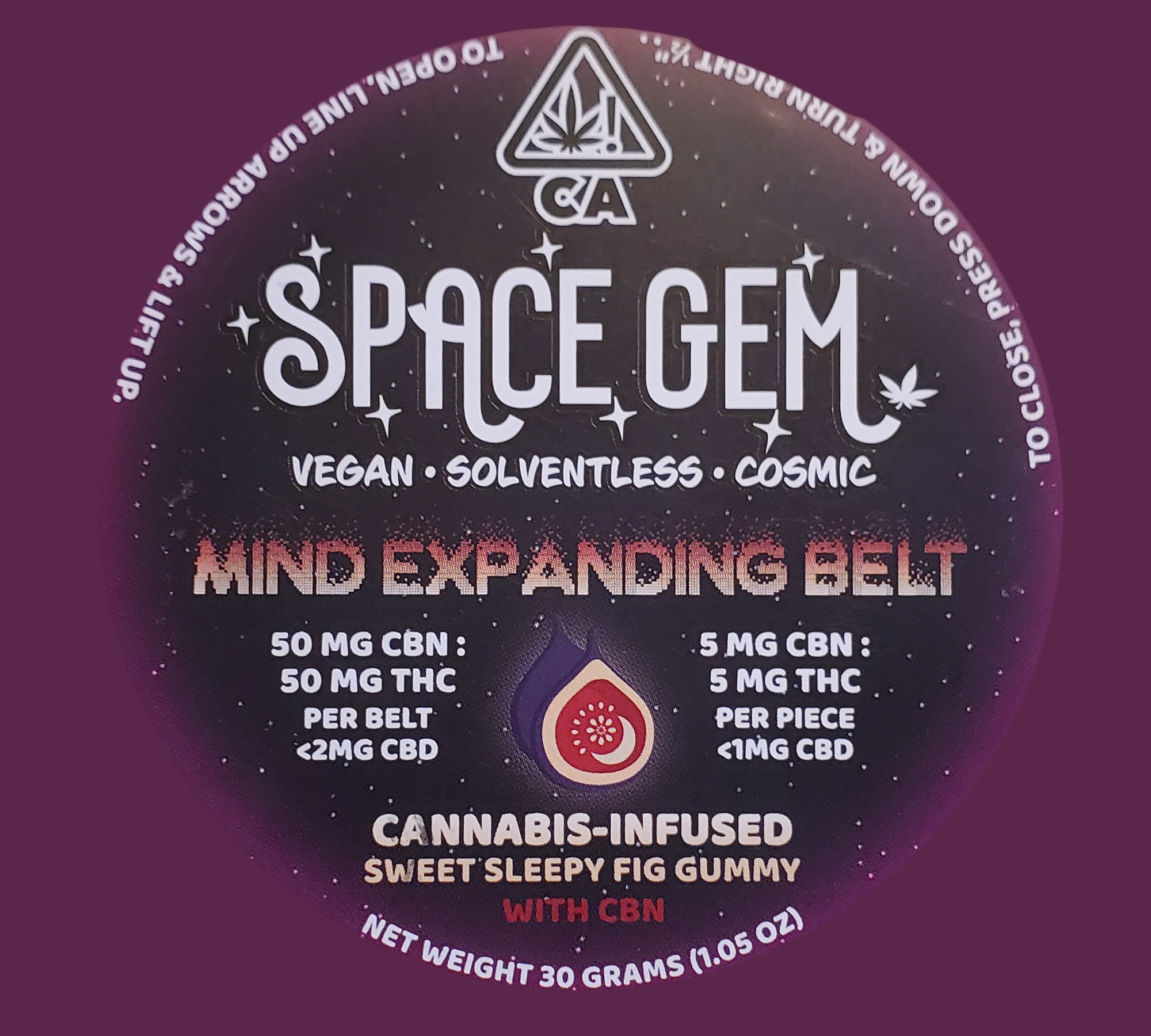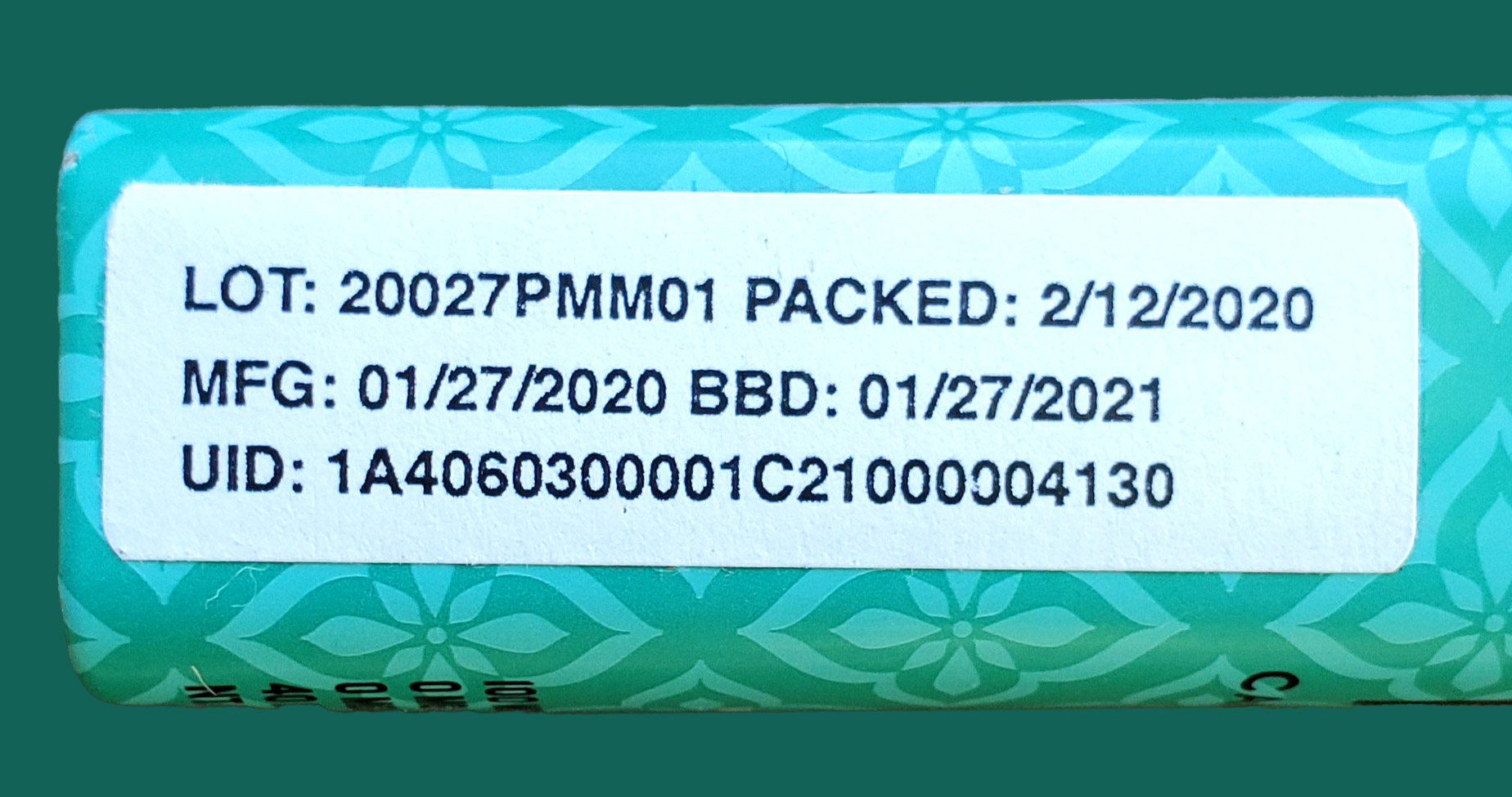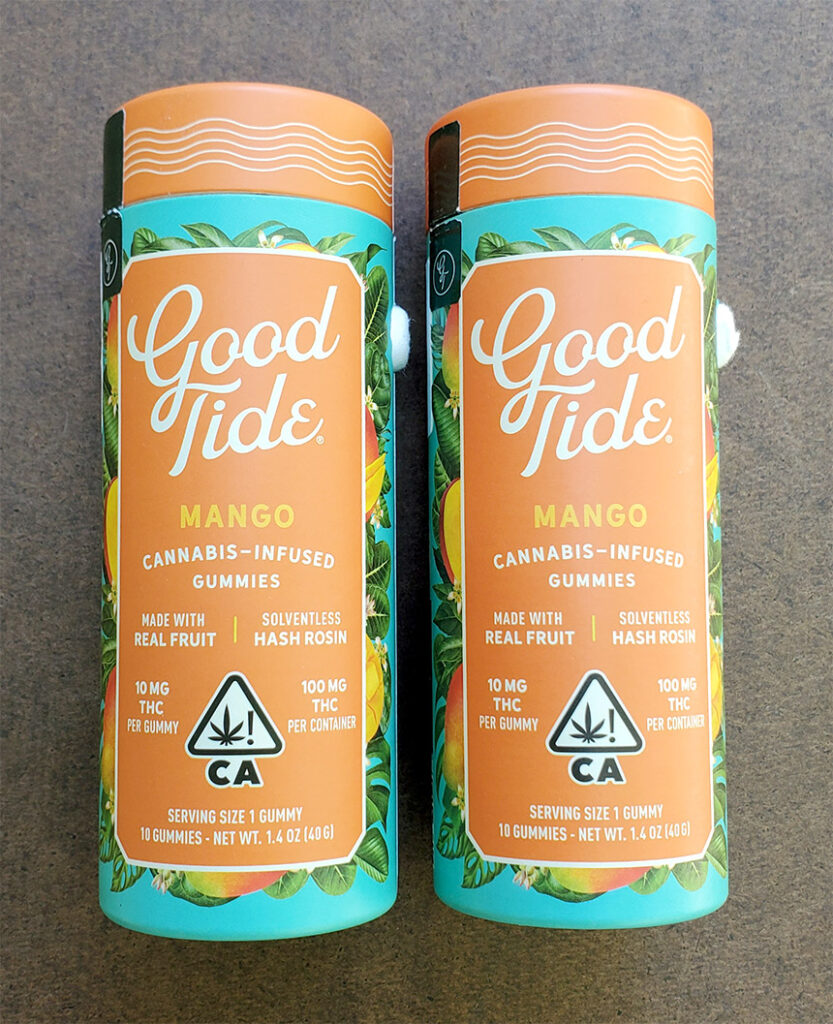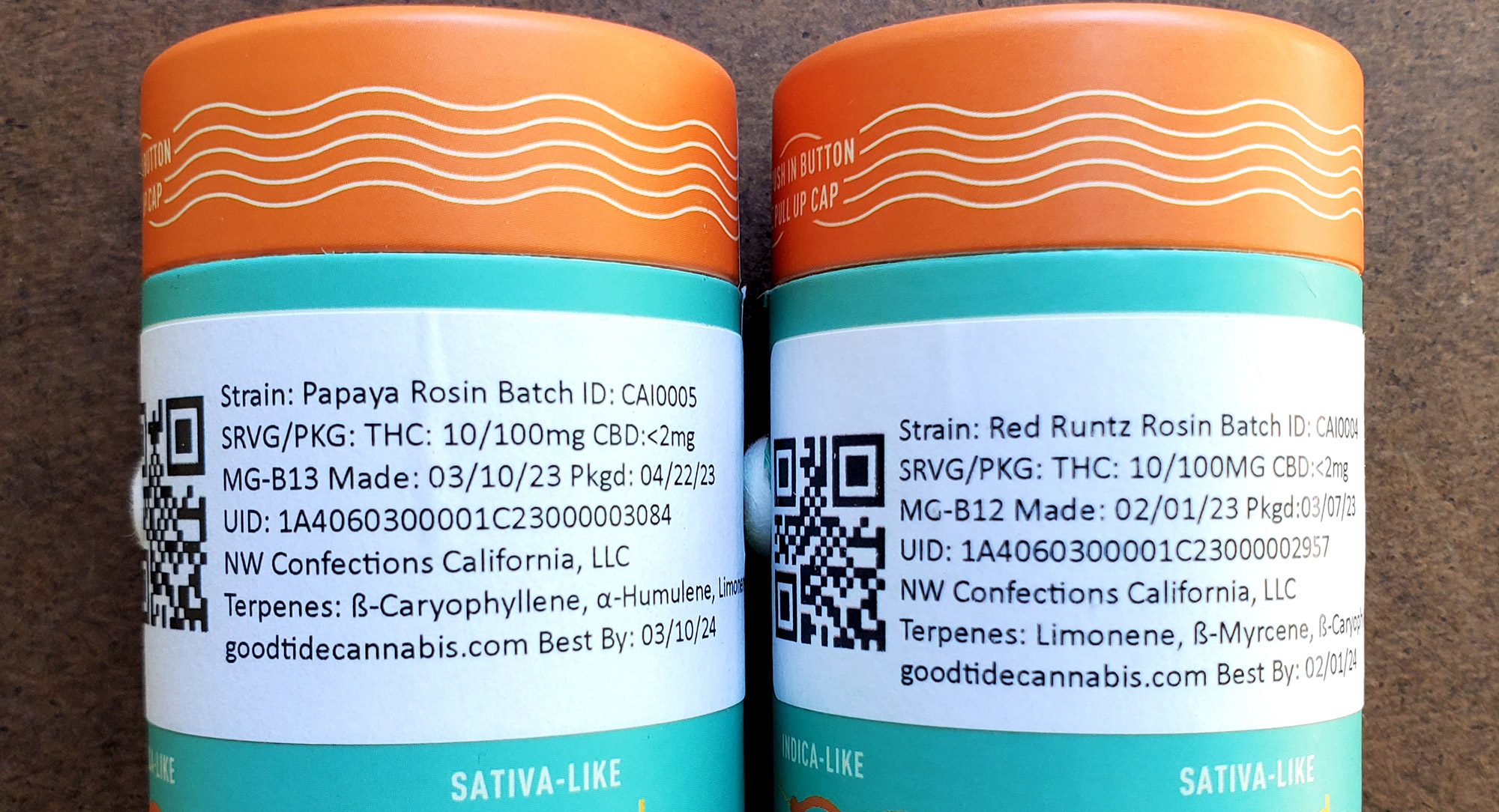How to Read a Label
The label provides information about the product’s strength, expiration or “best by” date, and cultivar (strain), to name a few.
It’s important to note that product packaging labeling laws and requirements vary from state to state, and not all labels will have the same information. Being aware of this variability will help you navigate the information on different product labels.
Below is information commonly found on cannabis product labels and packaging. This information will help you choose a product that meets your needs and avoid purchasing products that are either too strong or have been sitting on the shelf too long.
- Net weight or volume of the package
- Name of cultivar (strain)
- THC, CBD, and other cannabinoid content for the entire package, in milligrams
- THC, CBD, and other cannabinoid content per serving, in milligrams
- Potency/percentage of THC and other cannabinoids (e.g., CBD, CBN, CBG)
- Ratio of cannabinoids (e.g., CBD:THC, THC:CBN)
- Percentage of terpenes
- Terpenes in the product (e.g., caryophyllene, limonene, pinene)
- Packaging date
- Expiration date, use-by date, or best-by date (BBD)
- Method of consumption (e.g., edible, topical)
- Batch number
- UID or supply chain tracking number
- Health warnings required by law
Ratio of cannabinoids (e.g., CBD:THC)
You may see numbers separated by a colon (e.g., 1:1, 2:1, 18:1), a ratio on product packaging. These numbers tell you what the ratio of CBD to THC is in the product. CBD (cannabidiol) will not get you high, but it can change your state of mind, make you feel more at ease, and a reduction in pain symptoms. THC (tetrahydrocannabinol) is the primary psychoactive compound in cannabis and will get you high. Used together, CBD helps mitigate some of the adverse effects (e.g., paranoia) of THC.
Terpenes
Terpenes, aromatic compounds found in many plants (e.g., lemons, rosemary, pine trees), including the cannabis flower, play a significant role in the high one experiences. Working with the cannabinoids in the plant, they create what’s known as an ensemble effect or entourage effect. This intriguing interaction is why some consumers seek out specific terpenes and a higher percentage of terpenes in cannabis products, curious about the particular effect the terpene in conjunction with a cannabinoid will elicit.
You can learn more about terpenes in the Cannabis Basics section of this website.
Expiration date, “use by” date, or “best by” date (BBD)
You don’t want to buy products that have been on the shelves for a long time. Flower can dry up, THC can decrease, gummies can harden, and terpenes can weaken.
Batch number
A manufacturer generates batch numbers to identify products from a single production batch.
UID
Unique Identification Numbers are generated to track the movement of cannabis through the supply chain.
Click on any arrow to learn more.

Cannabis content per package (CBN:THC)
Cannabis content per piece (CBN:THC)
Less than 1mg CBD per piece

Manufacturing date
Packaging date
Best by date

They look the same, but each is made with a different cultivar (strain) and possesses different terpene profiles.

Strain: "Papaya"
THC content per serving / per package
Terpenes: β-Caryophyllene, α-Humulene, Limonene
Best by date
Strain: "Red Runtz"
Terpenes: Limonene, β-Myrcene, β-Caryophyllene

Potency (percentage of THC and CBD)
Percentage of terpenes
Packaging date

Strain
Packaging date
Potency percentage
Percentage of terpenes
